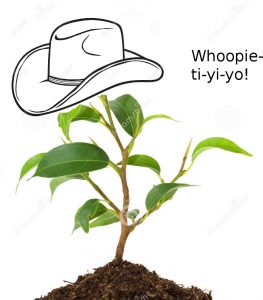Most of us know that soil fauna (arthropods, nematodes, bacteria, fungi, etc.) are vital to soil health. These little critters help break down the dead vegetation matter in and on top of the soil, making the nutrients in this matter available to the living plants. They also help the plants fight off parasites and diseases. But did you know that the living plants actively attract the soil fauna that they need, by putting sugars and starches into the soil around their roots? It’s very much like a rancher managing a herd of livestock – but on a much smaller scale. And without the horses, campfires or harmonicas.
Once the dead organic matter is decomposed as much as possible, having been eaten and excreted by fauna several times over, the excess nutrients (i.e. those not immediately needed by the plants) are stored in the soil in the form of humus: extremely complex carbon compounds. Conventional agriculture’s synthetic fertilizers burn through soil fauna and humus; the carbon sequestered in humus becomes CO2, a greenhouse gas, significantly contributing to climate change. And without humus to hold it together, topsoil turns to dust, and is lost to wind and rain.
Conversely, we can significantly mitigate greenhouse gas emissions, resequestering the carbon, by building soil: adding organic matter through compost top-dressing and mulch; using no-till gardening methods; growing edible perennials rather than just annuals; and using compost teas to make sure the soil is crawling with beneficial microbes.
And if you feel led to go out in the garden with your harmonica and play ‘Home on the Range’, your plants will understand.
For more information about feeding soil by adding organic matter, see Soil Building 101.
